Much of angling literature and this website consists of tips about matching one stage or the other for the various species. In May of 2005 I caught one mayfly molting between the two stages.
It belongs to the species Leptophlebia cupida, which anglers know as the Black Quill.
The Dun
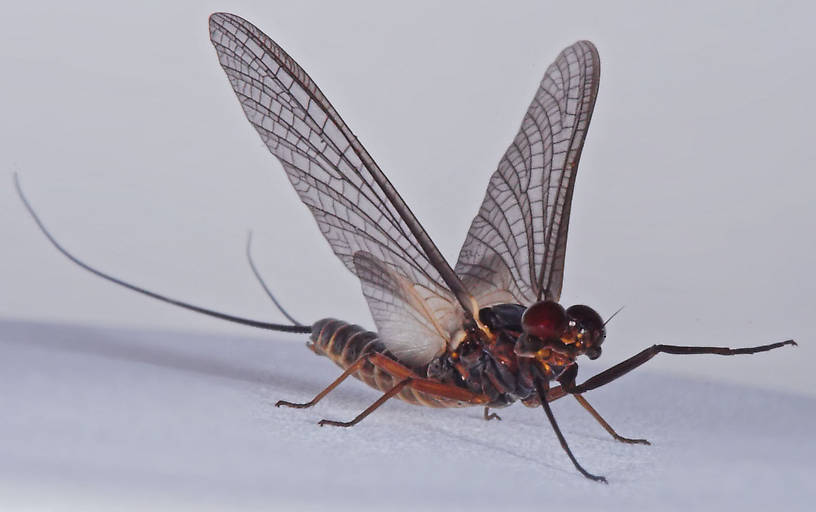
The Molting Process
The skin of the dun splits above the thorax (Thorax: The thorax is the middle part of an insect's body, in between the abdomen and the head, and to which the legs and wings are attached.) and it anchors its tarsi (
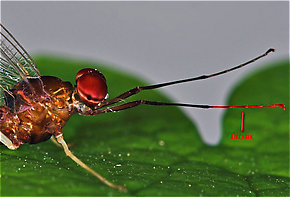
The tarsus of this Isonychia bicolor mayfly spinner is highlighted in red.

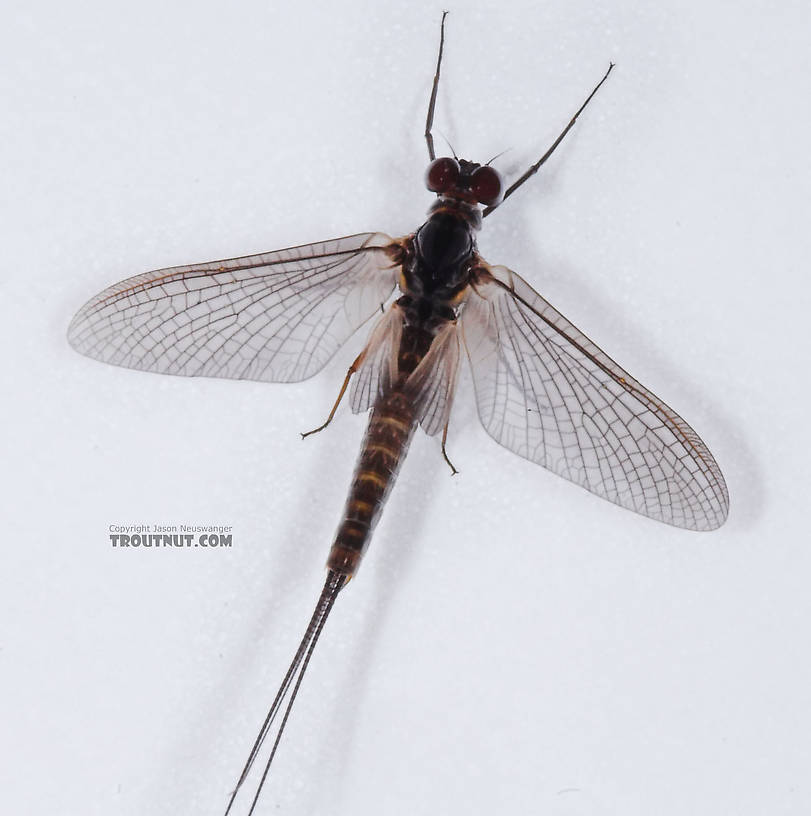
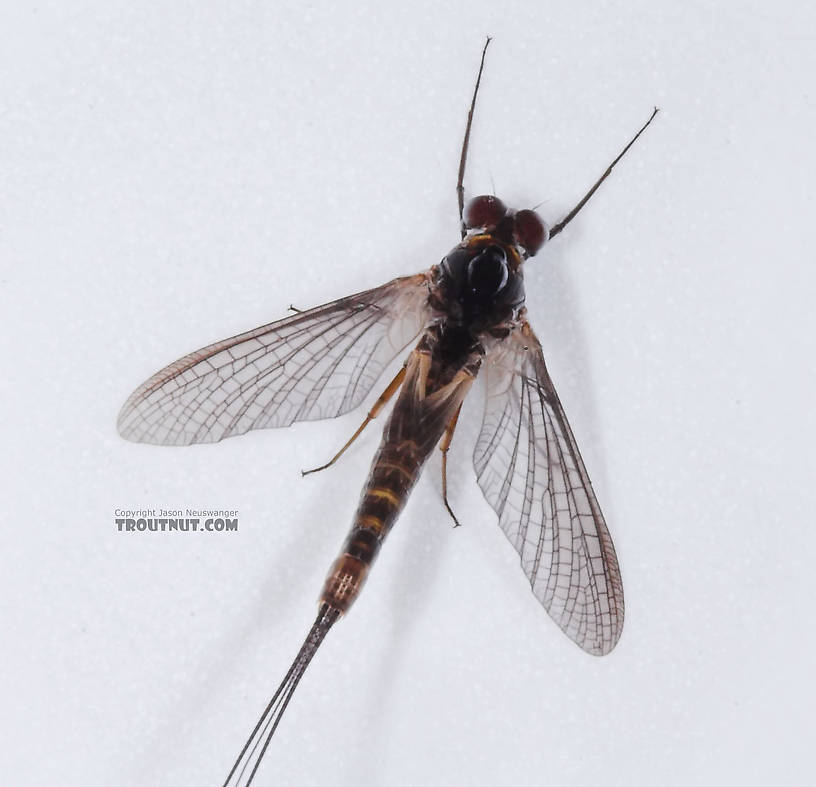
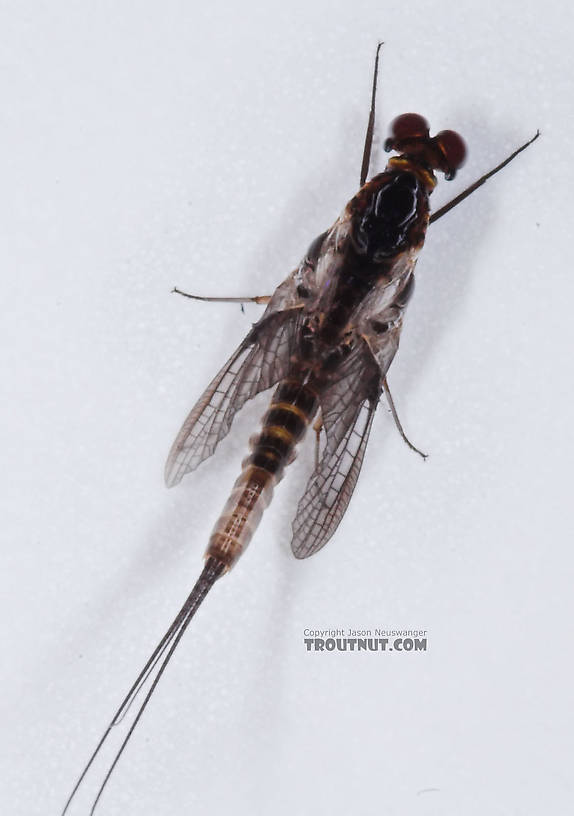








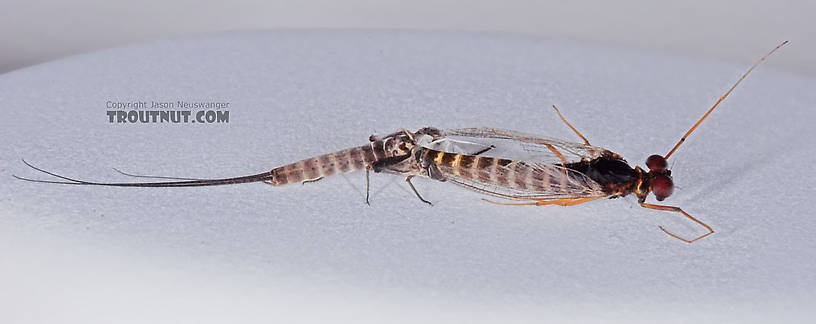




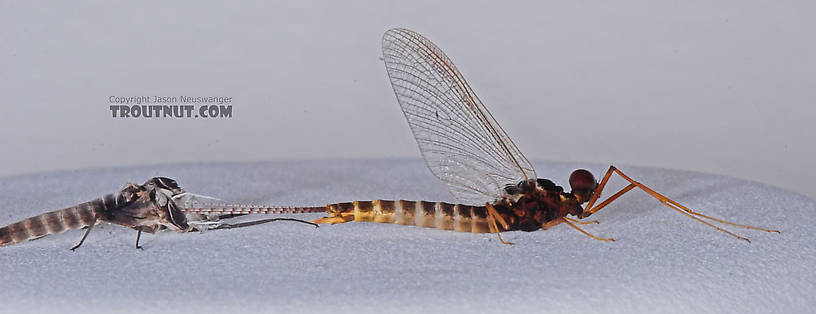

The Spinner

Readers who enjoy this sequence will also enjoy the shots of an Ephemera varia dun molting into a spinner in Ted Fauceglia's book Mayflies . His photos present the same process in a much more artistic manner.


